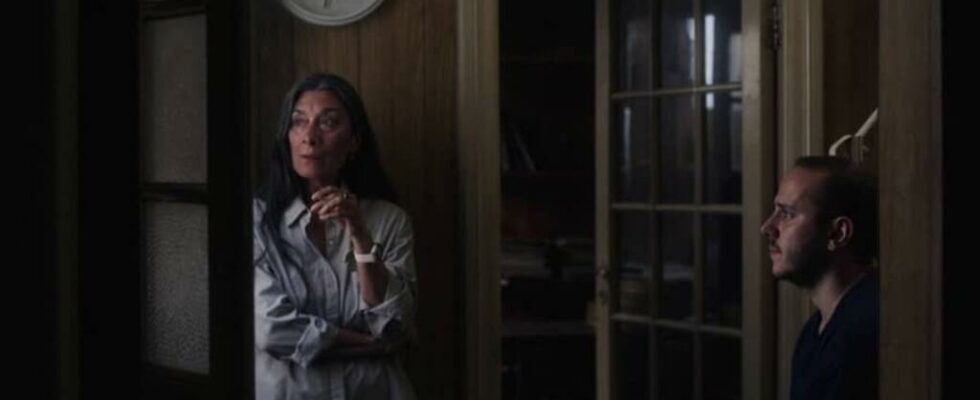The Panorama of Colombian Cinema continues its course with its various proposals, including a parallel section devoted this year to Argentine cinema. Shown support from the association El Perro que ladra (The Barking Dog), organizer of the festival and therefore the aim is to introduce not only Colombian cinema, but also all the cinema of the subcontinent with regular meetings. With the financial crisis and especially the policy of the Milei government, cinema and more generally cultural activities are very threatened in Argentina.
5 mins
Argentine cinema is in an emergency situation and each international meeting or festival is an opportunity to remind people of this, because it is a cinema that is exported, and that is exported well. This was the case in Cannes, in San Sebastian and it is still the case at the Panorama of Colombian Cinema. “ Since 2023, cultural public policies have been attacked by various reforms and bills that seek to destroy Argentina’s cultural industries. This ultra-liberal trend stigmatizes cultural professions, leading to drastic budget cuts and massive layoffs », We can read in the press release which accompanies the films in the parallel section. “ Faced with this political emergency, we express our support for Argentine cinema through the first edition of Cahiers argentins presented as part of the parallel section of the Panorama of Colombian Cinema. To cultural repression and state violence, we respond collectively with the vital energy of cinema as a form of political resistance. »
Three films were chosen for these “Argentinian Notebooks”, three women’s films, three serious films which question memory, the passing of time, death… and cinema. “ After we die, we never live the same again “, says Rami, one of the protagonists of the film The indefinite things by Maria Aparicio, quoting a film critic’s text on mourning. This is what they say Las Almas by Laura Basombrio, The indefinite things And All Civilization Documents by Tatiana Mazú, each with its own subject and its own particular cinematographic writing. Eva, in Maria Aparicio’s film, has lost her friend Juan and her desire to edit films, Estela, in Las almas, has lost herself and mourns her dead and in Todo documento de civilizacion, the mother of Luciano Arruga, a teenager murdered by the police, fights to know the truth about the death of her child.
The indefinite things
“ More than cemeteries, (cinematographic) archives are full of the living dead », states Eva, the main character of Maria Aparicio’s film to her students, in a long presentation on cinema as a trace, as the backbone of memory. Eva has just lost a dear friend, a filmmaker with whom she worked as a film editor. The indefinite things by Maria Aparicio opens with the tribute paid by her friends to the deceased. A bouquet, a coffin that we see and motionless people, frozen in grief. “ With cinema, now images have a life, they come back and better than ghosts… “. Eva, played by the actress Eva Bianco, a sort of double of the director, and her assistant Rami, played by Ramiro Sonzini, himself a filmmaker and editor of Maria Apacicio’s film, work on the unfinished films of their missing friend Juan.
Films and archives of which many traces remain. Eva and Rami are the two main characters in this film, shot almost behind closed doors, in the cozy atmosphere of the office or the editing room. Eva is most often filmed facing the camera and Rami a little to the side. He questions, she questions. The camera is attentive to the slightest movements of the body, to hesitations and the dialogues are very written, but without affectation. It’s a very refined film and the faces of the “actors” (Ramiro Sonzini is not) only show very little emotion. The mourning, the emotion, the trouble are sometimes told by a voice-over and suggested by these gently colored bouquets that Eva places everywhere.
The indefinite thingsthe title of Maria Aparicio’s film, is a tribute to the filmmaker Robert Bressonwe can read, but the references to the filmmaker are multiple in the film. For example when the character of Eva echoes one of her best-known films, The ladies of the Bois de Boulogne. It reads: “ You can count the steps in a film. He moves forward, like a man on a path. Hélène walks from love to revenge, Jean walks with Agnès, Agnès walks to her death… All these characters who head in films towards undefined things…”, in reference to the three characters in Bresson’s film… Or when, during editing, the voices are decorrelated from the image.
Eva has reached the end of her desire for cinema, she believes. But her questions about how to create characters in the film she is working on with Rami, blind people who tell their stories, prove the opposite. It was my friend Juan who left this film project on hold when he died. Young blind people talk about their perception of the absence of light and colors (do we see everything black when we are blind?), their relationships with their loved ones who appear – “in flesh and blood” – in their dreams, their experiences blind people like an encounter with the sea… What if instead of making a generic film on the issue of blindness, we made a film with real blind characters, suggests Eva. We would tell stories, it would be stronger. And the text on The ladies of the Bois de Boulogne suggests another avenue, filming footsteps… in Super 8… The film opens with a bouquet and ends with a bouquet. “ You have to trust the films, they are much more generous than you think » said Rami to Eva.
A film which has not been distributed in France, to be discovered, like all those proposed by the 12th edition of the Panorama of Colombian Cinema.
